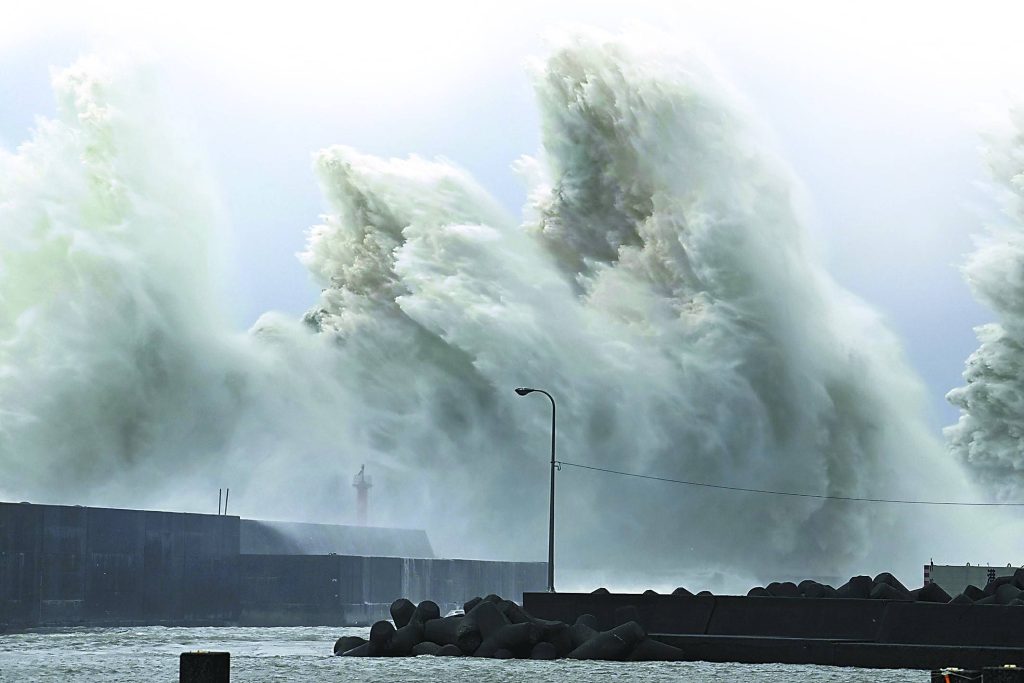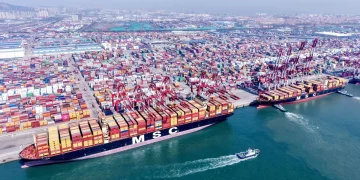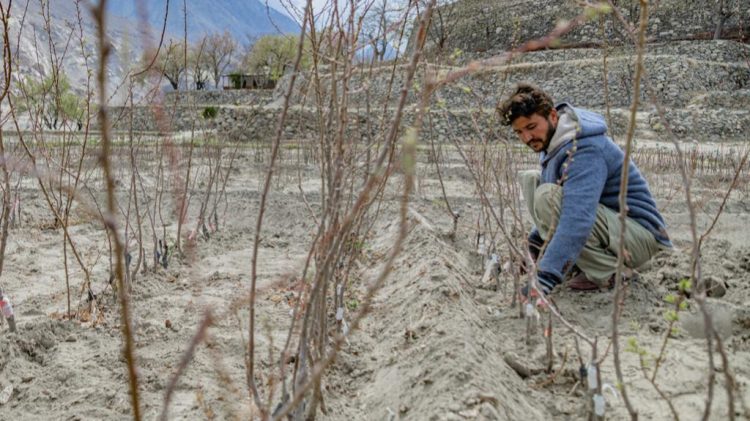The Asia-Pacific (APAC) region is one of the most vulnerable in the world to the impacts of climate change. With its vast diversity of environments, from the low-lying island nations in the Pacific to the high-altitude regions in the Himalayas, the region faces a range of environmental challenges that threaten both its ecosystems and its economies. These challenges are becoming increasingly severe, with rising temperatures, extreme weather events, sea-level rise, and changing rainfall patterns affecting agriculture, infrastructure, health, and water resources across the region.
For many countries in the APAC region, particularly the Small Island Developing States (SIDS), the situation is urgent, with climate change posing an existential threat. However, even major economic powers like China, India, and Japan are grappling with the far-reaching consequences of climate change, which range from devastating floods to worsening air quality and increasingly unpredictable weather patterns.
This article examines how Asia-Pacific countries can respond to the growing impacts of climate change, the key challenges they face, and the strategies they can adopt to build resilience and promote sustainable development.
1. Understanding the Climate Change Challenges in the Asia-Pacific Region
1.1. Rising Sea Levels and Coastal Flooding
Many APAC countries, particularly those in Southeast Asia and the Pacific islands, are already experiencing the effects of rising sea levels. Coastal cities, such as Jakarta, Ho Chi Minh City, and Manila, are threatened by flooding, which could displace millions of people, damage infrastructure, and disrupt economies. Small island nations like the Maldives, Tuvalu, and Kiribati are at risk of disappearing entirely as their land mass becomes uninhabitable due to sea-level rise.
In addition to flooding, saltwater intrusion is affecting agricultural land, making it difficult to grow crops and threatening food security in the region. The effects of rising sea levels are also felt in the disruption of fishing industries, which many coastal populations depend on for their livelihoods.
1.2. Extreme Weather Events
The APAC region is highly prone to extreme weather events, such as tropical cyclones, monsoons, droughts, and heatwaves. Countries like the Philippines, Bangladesh, and Myanmar regularly face devastating typhoons that cause significant damage to infrastructure and displace millions of people. Similarly, the region is also seeing more frequent and severe droughts, particularly in areas like Australia, India, and parts of China, which disrupt agriculture and water supplies.
These extreme weather events not only cause immediate loss of life and property but also have long-term economic impacts, particularly on the poor and vulnerable populations who lack the resources to recover from such disasters.
1.3. Changing Agricultural Patterns
Climate change is affecting the agricultural sector, which is a vital source of income and sustenance for many in the APAC region. Changes in temperature and precipitation patterns are altering growing seasons and agricultural productivity. In countries like India, which depend heavily on monsoon rains for crop irrigation, inconsistent rainfall and droughts are threatening food security.
Moreover, pest infestations and crop diseases, driven by rising temperatures and humidity levels, are becoming more common, further exacerbating the vulnerability of agricultural systems. For nations like Vietnam, Thailand, and Indonesia, this could mean a loss of exports, reduced food supplies, and increased economic instability.
1.4. Water Scarcity
Water scarcity is becoming an increasingly pressing issue in the Asia-Pacific region, especially in densely populated countries like India and China. Changing weather patterns, including reduced rainfall and longer dry seasons, are putting immense pressure on water resources. Large-scale water projects, such as the construction of dams and reservoirs, are often strained to meet the demands of rapidly growing urban populations and agricultural sectors.
In addition, climate change-induced flooding and pollution are also contaminating water sources, further exacerbating water insecurity. The scarcity of clean and reliable water sources impacts public health, sanitation, and the ability to produce food and energy.
1.5. Health Impacts
The health impacts of climate change are becoming increasingly evident in the APAC region. Rising temperatures contribute to the spread of diseases such as malaria, dengue fever, and cholera, particularly in tropical regions. Additionally, heatwaves and poor air quality, particularly in major cities like New Delhi and Beijing, have led to an increase in respiratory illnesses, heart diseases, and premature deaths.
Climate change also affects mental health, particularly in communities that face repeated extreme weather events, such as floods or hurricanes. The stress and trauma caused by such disasters, coupled with displacement and loss of livelihoods, create significant challenges for governments to address public health.
2. Strategies for Climate Adaptation and Mitigation in the Asia-Pacific Region
Given the complex and interconnected nature of climate change impacts in the APAC region, a multi-faceted approach is required to build resilience and mitigate the negative effects. Here are some strategies that Asia-Pacific countries can adopt to respond to these growing challenges.
2.1. Strengthening Disaster Preparedness and Response
In light of the increasing frequency and severity of extreme weather events, disaster preparedness and response are crucial for minimizing loss of life and property. Governments across the Asia-Pacific region need to invest in early warning systems, improve emergency response capabilities, and develop resilient infrastructure that can withstand natural disasters.
Countries like Japan and the Philippines have made significant strides in disaster risk reduction and preparedness, including the development of sophisticated early warning systems and disaster management plans. Other nations can learn from these examples and implement similar strategies to protect vulnerable communities.
In addition to improving physical infrastructure, there is a need for robust social safety nets to support people affected by natural disasters. This includes providing financial assistance, relocation support, and mental health services to help people cope with the trauma of climate-related disasters.
2.2. Investing in Climate-Resilient Infrastructure
Building climate-resilient infrastructure is a key component of addressing climate change impacts. This includes reinforcing critical infrastructure such as roads, bridges, and buildings to withstand extreme weather events, as well as investing in sustainable urban planning to reduce exposure to flooding and other hazards.
In cities such as Jakarta and Bangkok, innovative solutions such as flood barriers, elevated roads, and improved drainage systems can help protect communities from the impacts of rising sea levels and heavy rainfall. Moreover, improving the sustainability of energy systems, including increasing the adoption of renewable energy sources like solar and wind power, can reduce greenhouse gas emissions while ensuring long-term energy security.
2.3. Promoting Sustainable Agriculture and Water Management
As climate change threatens food security in the region, Asia-Pacific countries must focus on promoting sustainable agriculture practices. This includes transitioning to climate-resilient crop varieties, improving water-use efficiency, and adopting practices that reduce soil degradation. For example, countries like India and China are increasingly turning to drip irrigation systems to conserve water in areas prone to drought.
Sustainable agriculture is also linked to the preservation of ecosystems, such as forests and wetlands, which provide essential services such as carbon sequestration, water filtration, and soil stabilization. Protecting these ecosystems is vital for mitigating the effects of climate change and ensuring the continued productivity of agricultural land.
At the same time, improving water management systems is crucial for addressing the growing challenge of water scarcity. Investment in rainwater harvesting, desalination technologies, and water recycling can help countries meet the demands of their growing populations and changing climate conditions.

2.4. Strengthening Regional Cooperation and Collaboration
Given the transnational nature of climate change impacts, regional cooperation is critical to addressing the challenges posed by climate change in the Asia-Pacific region. Countries must work together to share knowledge, resources, and best practices for climate adaptation and mitigation.
ASEAN, the Pacific Islands Forum, and other regional organizations provide platforms for dialogue and collaboration on climate change. By working together, countries can build collective resilience, enhance disaster preparedness, and advocate for stronger global action on climate change.
For example, countries like Australia, New Zealand, and Pacific island nations have already started to collaborate on climate change mitigation and adaptation projects, focusing on reducing emissions, improving renewable energy capacity, and protecting vulnerable coastal communities. Regional cooperation on climate finance is also essential to help smaller nations access the resources they need to implement climate action plans.
2.5. Prioritizing Climate Change Mitigation
While adaptation measures are crucial, long-term solutions require a focus on climate change mitigation. Asia-Pacific countries must transition toward low-carbon economies by reducing greenhouse gas emissions and promoting the use of renewable energy sources. China, the largest emitter of greenhouse gases in the world, has pledged to achieve carbon neutrality by 2060, while other nations such as India and Japan are also setting ambitious goals for reducing emissions.
Regional leaders must push for stronger international commitments to mitigate climate change, including the full implementation of the Paris Agreement and the commitment to keeping global temperature rise well below 2°C. By promoting policies that incentivize green technologies, energy efficiency, and sustainable industry practices, Asia-Pacific countries can reduce their carbon footprints and help curb the global impacts of climate change.
3. Conclusion: A Call for Urgent Action
The Asia-Pacific region is facing the brunt of climate change impacts, which threaten not only the environment but also the region’s economic and social stability. To address these challenges, governments, businesses, and communities must work together to implement strategies that build resilience, promote sustainable development, and reduce emissions.
Asia-Pacific countries have the opportunity to lead the way in climate adaptation and mitigation by fostering regional cooperation, investing in green technologies, and prioritizing climate resilience in all sectors of society. However, this requires urgent and sustained action at all levels of government and society. Only through collective efforts and long-term planning can the Asia-Pacific region overcome the growing threat of climate change and ensure a sustainable future for its people and ecosystems.


































